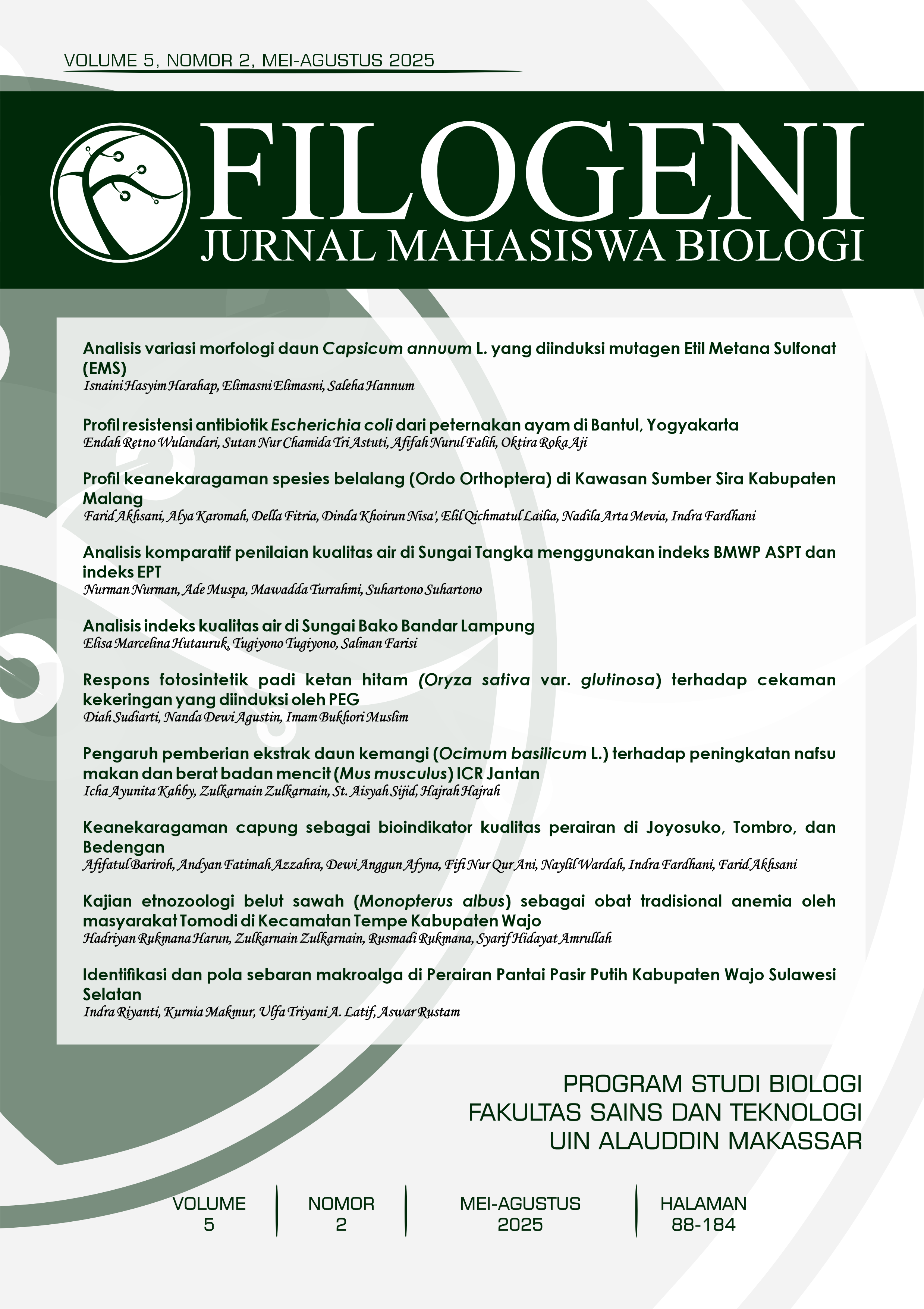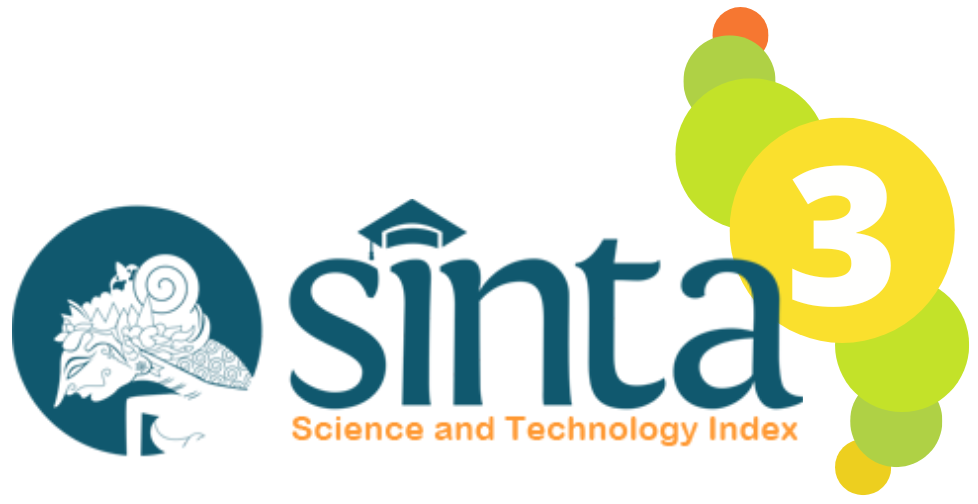Analisis variasi morfologi daun Capsicum annuum L. yang diinduksi mutagen Etil Metana Sulfonat (EMS)
DOI:
https://doi.org/10.24252/filogeni.v5i2.57097Keywords:
Analisis klaster, Etil metana sulfonat, Capsicum annuum L., Induksi mutasi, Morfologi daunAbstract
Cabai merah (Capsicum annuum L.) merupakan tanaman holtikultura bernilai ekonomi tinggi karena terdapat kandungan biomolekul penting di dalamnya. Upaya peningkatan keragaman genetik dapat dilakukan melalui induksi mutasi dengan menggunakan mutagen kimia seperti etil metana sulfonat (EMS). Mutasi dapat menyebabkan perubahan pada daun tanaman cabai. Penelitian ini bertujuan untuk mengetahui pengaruh induksi mutagen EMS terhadap variasi morfologi daun cabai merah (C. annuum L. Cv. Tanjung 2). Morfologi daun yang diamati meliputi panjang daun dan lebar daun. Metode yang digunakan yaitu dengan melakukan induksi mutasi pada biji cabai merah menggunakan EMS dengan konsentrasi 0,00% (M0); 0,10% (M1); 020% (M2); 0,30% (M3); 0,40% (M4); 0,50% (M5); 0,60% (M6); dan 0,70% (M7). Selanjutnya menanam cabai, dan melakukan analisis fenotipik dan analisis data. Hasil penelitian menunjukkan bahwa terdapat kecenderungan variasi antar perlakuan secara deskriptif namun tidak signifikan secara statistik. Panjang daun berkisar antara 9,32 cm (M7) hingga 10,66 cm (M2). Lebar daun berkisar antara 3,96 cm (M7) hingga 4,58 cm (M4). Panjang daun dan lebar daun memiliki korelasi yang sangat kuat dan signifikan. Berdasarkan analisis klaster M0, M1, M2, M3, M4, dan M6 membentuk satu klaster besar sedangkan M5 dan M7 membentuk klaster terpisah. Temuan ini memberikan dasar bagi penelitian lebih lanjut dalam pemuliaan tanaman, studi genetik, dan aplikasi dalam pertanian, terutama dalam meningkatkan keragaman genetik cabai merah melalui pendekatan mutagenesis.










